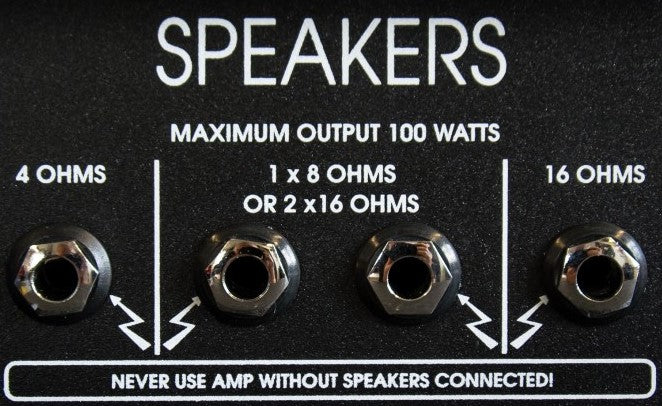Table of Contents
Introduction
A speaker's impedance and power rating are two main parameters you should understand to choose a speaker that's electrically optimised for your amp.
This guide explains them in simple terms to get you started quickly.
- Turtle 🐢
#mindyourtone
Impedance (Ohms)
A speaker's nominal impedance indicates the intended amplifier output impedance that it was designed to work with.
Two main rules
1) Speaker-Amp matching
Overall impedance of your combined speakers should match your amplifier's output impedance as closely as possible.
With multiple speakers, the overall impedance, wired in series, is the sum of all speaker impedances; and wired in parallel, is the impedance of one speaker divided by the total number of speakers connected. This assumes the correct practice of all speakers having the same impedance rating.
Eg. 8ohm + 8ohm has combined a impedance of 16ohm (series) or 4ohm (parallel).
It's safe to run higher impedance speaker with lower impedance output, but best not to exceed twice the output impedance (eg. Max 8ohm speaker, with 4ohm output). Just bear in mind the amp power will theoretically be halfed, possibly accompanied by a slight mid-boost.
2) Speaker-Speaker matching
When powering multiple speakers (eg. 2 x 12 or 4 x 12), ensure they all have the same impedance rating.
(15 and 16ohms can be considered as the same impedance for this purpose)
Do they sound different?
Manufacturers, including Celestion, tend to state they sound identical, and there're many users that agree.
However, there're also notable musicians and producers (eg. Nolly, Adam Steel, Kristian Kohle) who swear that high impedance speakers sound brighter than their lower impedance versions.
It looks like the jury is still out on this...
Theoretically, correctly matched speaker-amp impedances sound identical. Eg. 8 and 16ohm versions of the same speaker sound identical, when connected to the 8 or 16ohm outputs respectively of the same amp.
However in practice, it's common for amps to have varying tonalities across their different outputs, causing tonal differences even with impedance-matched speakers. Some Friedman models are known to exhibit this, for example.
Some players intentionally use mismatched speaker-amp pairs. As the mismatch widens, the speaker's sound changes from its original design, which could be desirable for some. Too wide however, could damage your equipment. If you want to experiment with this, read Hugh & Kettner's guide first!
Power Handling (Watts)
The speaker's power rating, in Watts, indicates the maximum amplifer power output that it was designed to work with.
Note that it says nothing about the speaker volume - this attribute is described in its sensitivity rating.
One simple rule
Choose a speaker with a larger power rating than your amp's.
Using multiple speakers
If powering multiple connected speakers, then the combined power handling is a multiple of the lowest rated. Eg. 50W + 30W speakers has a combined handling of 2 x 30W = 60W.
What if I exceed the power rating?
Running speakers beyond their rated power handling can cause speaker distortion, which may or may not be a sound you like! Too much power and they'll be damaged.

